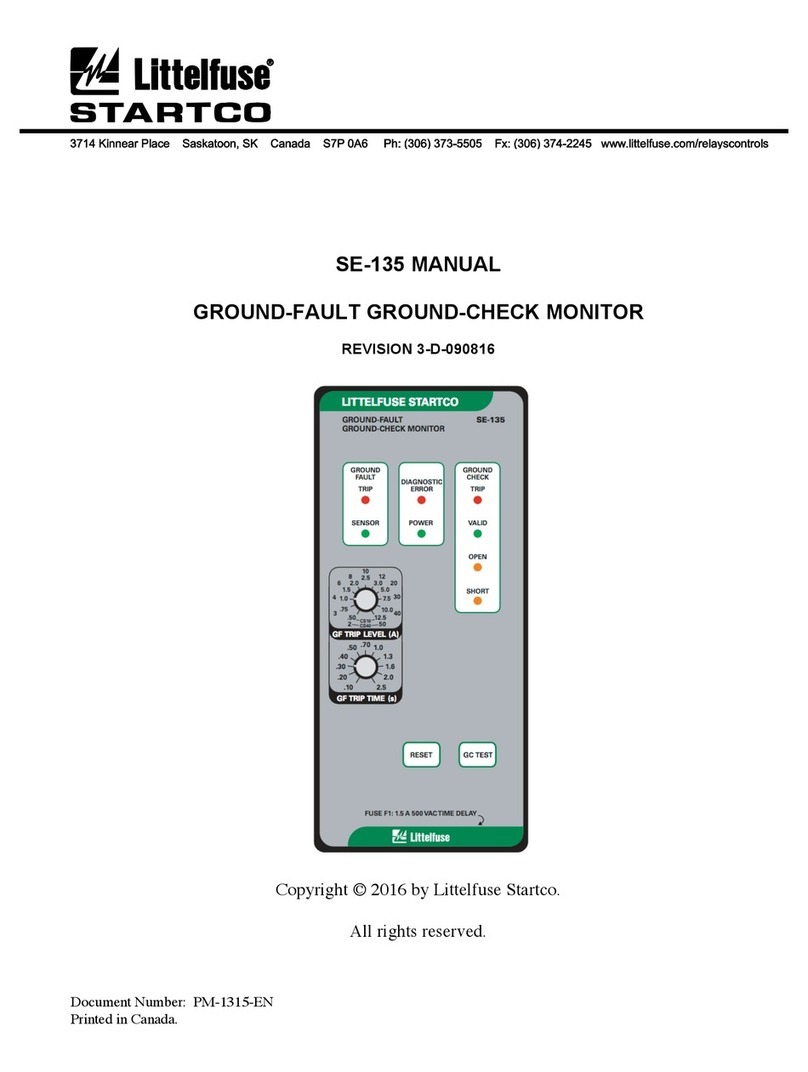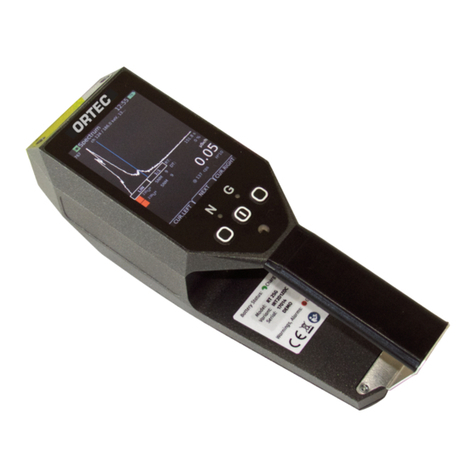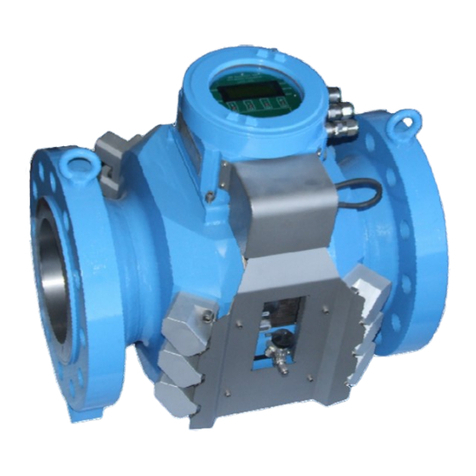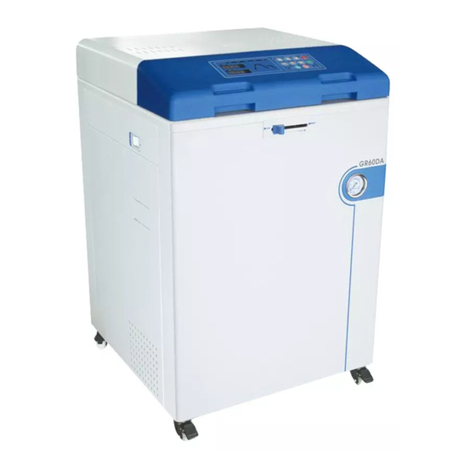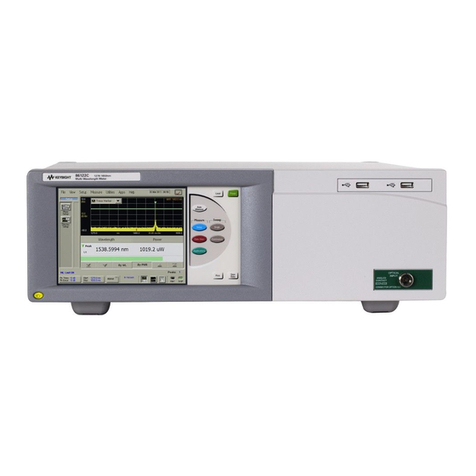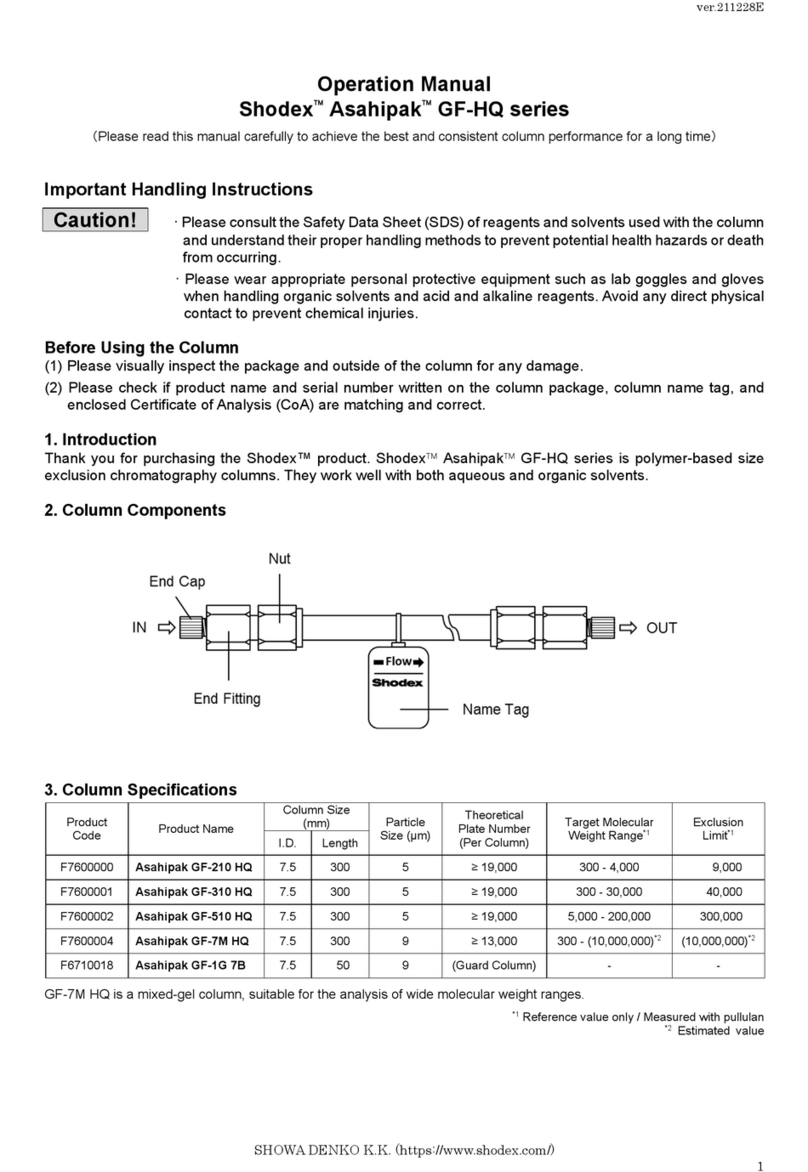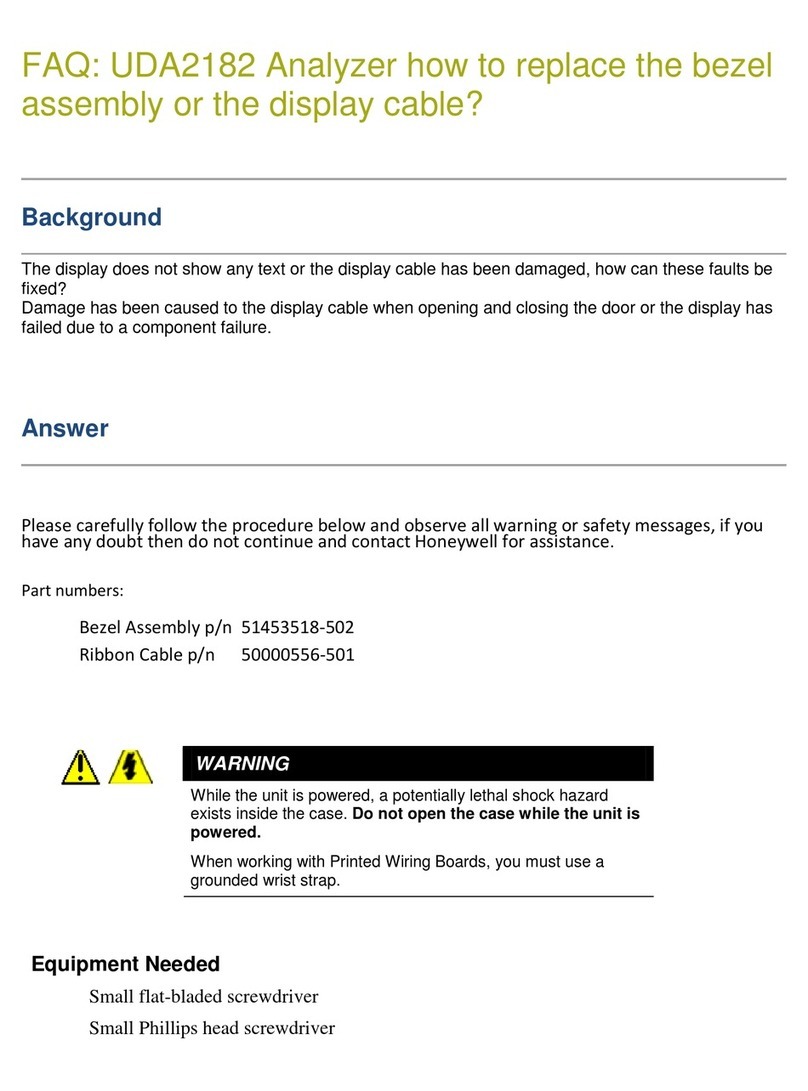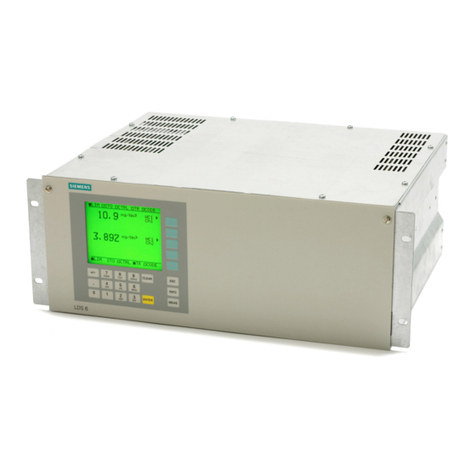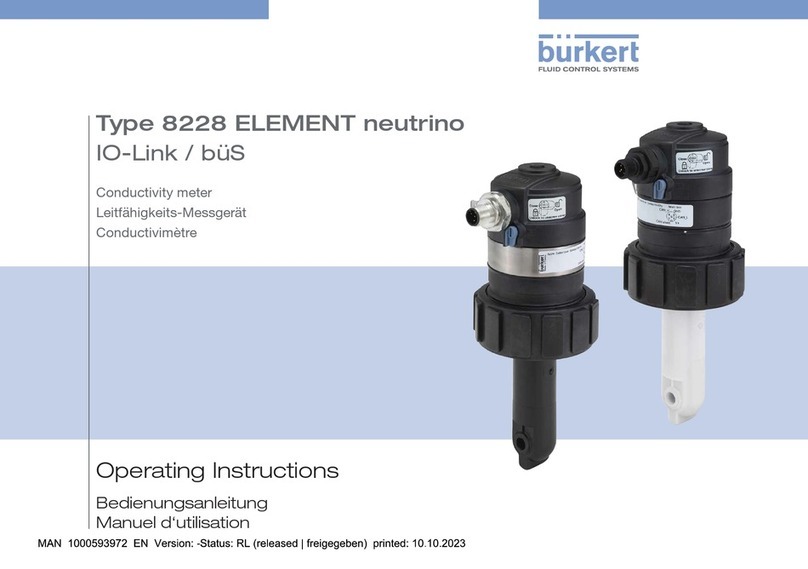PPM Technology PPM-400ST User manual

PPM–400ST Formaldehyde Meter
3 Parameter IAQ Monitor
Operation Manual
www.ppm-technology.com
PPM Technology Ltd • Cibyn Industrial Estate • Caernarfon • wynedd • LL55 2BD • Wales • UK
Telephone: +44 (0)1286 676 999 • Fax: +44 (0)1286 671 811 • E-mail: [email protected]
Registered in Wales: 3743347 • VAT Number: B 713 750 842 • ISO 9001 2015 Registered Firm
Amended: Sep 2018 • Issue: 4.7

PPM–400ST Formaldehyde Meter Operation Manual
TABLE OF ONTENTS
1 INTRODUCTION 3
1.1 Initial Receipt of the PPM–400ST Formaldehyde Meter 4
1.2 eneral Description 4
1.3 Instrument Features 6
2 TECHNICAL INFORMATION 8
2.1 Principle Of Operation 8
2.2 Interference 8
3 USIN THE PPM–400ST FORMALDEHYDE METER 10
3.1 Taking A Sample 10
3.2 Sensor Recovery Period 11
4 CALIBRATION CHECK AND ADJUSTMENT 12
4.1 eneral Information 12
4.2 The Formaldemeter Calibration Standard 12
4.3 Calibration Check Procedure 13
4.4 Calibration Adjustment Procedure 14
5 ADDITIONAL FEATURES 16
5.1 Temperature & Humidity Sensor 16
5.2 Limit Setting 17
5.3 Data Retrieval 18
6 MAINTENANCE 20
6.1 Instrument Battery 20
7 TROUBLESHOOTIN 21
8 ACCESSORIES 25
9 WARRANTY 26
APPENDICES 27
2

PPM–400ST Formaldehyde Meter Operation Manual
1 INTRODU TION
The PPM–400ST Formaldehyde Meter is an easy-to-
use, hand held, three-parameter, indoor air quality
monitor designed for the rapid measurement of
airborne formaldehyde levels, along with temperature
and humidity readings. The monitor is capable of
displaying formaldehyde readings in both parts-per-
million (ppm) and milligrams-per-cubic metre (mg/
m3) and has built-in data analysis functions to
compensate for high humidity readings, that can act
as interference to the instrument’s readings.
This operating manual will provide you with all the
necessary information for the correct use of your
PPM–400ST Formaldehyde Meter.
Please read these instructions carefully and
familiarise yourself with the instrument before use.
3

PPM–400ST Formaldehyde Meter Operation Manual
1.1 Initial Receipt of the PPM–400ST Formaldehyde Meter
Your PPM–400ST Formaldehyde Meter has been
packaged carefully and includes all the components
necessary for full operation. Immediately upon
receipt, please examine the kit contents carefully to
ensure that you have received the items listed below
and that they are all in good condition.
Component list The instrument kit contains:
PPM–400ST Formaldehyde Meter with battery
Formaldehyde Calibration Standard
Vial of Filters (10)
Ball point pen
Certificate of Calibration
This Operation Manual
Quick uide
Damage
Inspect all items carefully: any damaged or missing
items must be reported immediately to both the
carrier and your dealer.
1.2 General Description
Unlike other formaldehyde monitoring devices such
as colour stain tubes and badges, the PPM–400ST
Formaldehyde Meter is capable of measuring many
samples consecutively without the need for
inconvenient ancillary equipment. Being compact and
battery operated, the instrument is truly field
portable. The PPM–400ST Formaldehyde Meter is
also extremely simple to use and provides
immediate, semi-quantitative readings of
atmospheric formaldehyde concentrations in both
ppm and mg/m3.
The PPM–400ST Formaldehyde Meter is designed to
measure the concentration of formaldehyde in snatch
(discrete) samples of air and should be employed
primarily as a screening device.
4

PPM–400ST Formaldehyde Meter Operation Manual
Important points It is important that you are aware of the following
points when using the instrument:
The PPM–400ST Formaldehyde Meter is
temperature compensated to operate most accurately
in the range 15–29°C and 40–60%RH.
The results obtained with the PPM–400ST
Formaldehyde Meter are instantaneous readings: a
single reading is not necessarily representative of
long-term personal exposure. A series of readings
taken at short intervals is preferable to infrequent
tests.
Avoid smoking in the environment to be analysed:
tobacco smoke contains aldehydes which will
interfere with the readings.
Care must be taken to ensure that fluid or dust is
not drawn into the instrument. This could
permanently damage the sensor.
The PPM–400ST Formaldehyde Meter has been
designed to be sufficiently robust for everyday field
use. However, should the unit sustain a severe
physical shock, the operation and calibration of the
instrument should be checked using the supplied
formaldehyde Calibration Standard.
5

PPM–400ST Formaldehyde Meter Operation Manual
1.3 Instrument Features
Fig 1.1 Instrument Diagram
Sampling Port The brass sampling port is the inlet through which
the sample is drawn into sensor.
Battery
Compartment
The battery compartment is located beneath a cover
at the rear of the instrument. See Section 6.1 for
guidance on battery replacement.
Keypad Four buttons operate the instrument; some of which
have multiple functions when used in combination.
The buttons are:
% : On-Off
$ : Sample or select
> and < : Move to next item or adjust current setting.
6

PPM–400ST Formaldehyde Meter Operation Manual
Display The LCD shows the formaldehyde concentration and
also text messages during certain operations:
----
Sensor recovering
0.00
Sensor ready
run
Sampling
ALt=
Alternative result
CAL
Taking calibration sample
SEt
Set calibration level
bAt
Replace battery
ttp Lo
Fuel cell needs hydrating
SEt … CAL
Instrument not calibrated
7

PPM–400ST Formaldehyde Meter Operation Manual
2 TE HNI AL INFORMATION
2.1 Principle of Operation
Electrochemical
Formaldehyde
Sensor
The PPM–400ST Formaldehyde Meter uses proven
electrochemical sensing technology for determining
the concentration of formaldehyde in air samples.
The instrument contains a formaldehyde sensor
formed from two noble metal electrodes and a
suitable electrolyte.
When air is drawn into the sensor by the internal
sampling system a small voltage is produced as a
result of the oxidation of formaldehyde at one of the
catalytically active electrodes. This voltage is
directly proportional in magnitude to the
concentration of formaldehyde in the sample.
The voltage is amplified and converted to a digital
signal for a microprocessor which in turn
manipulates the signal to give a result on the
instrument display in “parts-per-million by volume”
(ppm). The microprocessor also converts the result
to “milligrams-per-cubic metre” (mg/m3) and
stores the results to non-volatile memory.
All the electronic systems are based on modern,
integrated circuitry employing the latest surface
mount technology to ensure that the PPM–400ST
Formaldehyde Meter is an exceptionally robust and
reliable instrument.
2.2 Interference
Alcohols &
Aldehydes
As with other portable detection equipment, the
meter is not totally specific to formaldehyde alone.
The instrument is susceptible to interference from a
small range of other chemicals. Other aldehydes
and alcohols such as methanol and ethanol in the
atmosphere can cause cross-interference effects.
8

PPM–400ST Formaldehyde Meter Operation Manual
A list of common chemicals that can cause
interference can be found in Appendix C or from the
manufacturer on request.
Phenol &
Resorcinol
The presence of phenol in the air can also cause
cross-interference on the PPM–400ST
Formaldehyde Meter. When monitoring
formaldehyde in situations where phenolic resins
are used, the filters provided should be used. The
filters will completely remove phenols and other
substances from the sample at concentrations in
excess of 1000 ppm without affecting the
formaldehyde reading.
Filter Life These fit on to the sampling port of the instrument.
Each filter should be used no more than ten times
and then discarded. Partially used filters should not
be stored in the vial with unused filters.
Replacement filters can be ordered from PPM
Technology or through your local distributor.
Sensor Background
Reading
Due to the high sensitivity of the sensor a
background reading can often be produced even
when sampling in an atmosphere considered to be
free of interference.
Humidity Extremes As the sensor is very sensitive, it is possible that
extremes of humidity (generally, anything outside
the 40–60% R.H. range) may cause a background
reading. The PPM–400ST Formaldehyde Meter is
specially designed to compensate for this problem
by using the humidity sensor and built-in data
analysis functions.
9

PPM–400ST Formaldehyde Meter Operation Manual
3 USING THE PPM–400ST Formaldehyde Meter
3.1 Taking a Sample
Power on Press the % button once to turn the instrument on.
The following display will flash ---- for 3 seconds
as the instrument checks the sensor background.
After this a steady 0.00 display indicates that the
instrument is ready to take a sample.
Sampling Hold the instrument in the atmosphere to be
sampled and press the $ button once to start
sampling. The display will show run and the
internal pump should be heard running for almost
two seconds as it draws air into the instrument.
Display Reading As the sample is analysed, the display will flash
between -.-- and 0.00 for 10 seconds and then
stay on -.-- for the remainder of the sample. After
60 seconds, the display will show the final reading
until the instrument is switched off. This indicates
the formaldehyde concentration in ppm.
Other Readings Pressing the > button after a sample will show the
time taken for the concentration to be analysed.
Pressing the < button after a sample will show the
reading in mg/m3, alternating with the ALt=
message.
Power off Press and hold the % button until the display
shows OFF and then release the button. If you
forget to switch the instrument off after a sample
the PPM–400ST Formaldehyde Meter will
automatically switch itself off after 5 minutes.
10

PPM–400ST Formaldehyde Meter Operation Manual
3.2 Sensor Recovery Period
Sensor Clearing Between samples the instrument should be left
switched off to allow the sensor to clear of any
residual formaldehyde. As a general rule, the higher
the reading obtained, the longer it takes for the
sensor to clear.
If the instrument is switched on before the sensor
has cleared, the pump will not operate and the
display will flash the ---- message.
The cell is clear and ready to take the next sample
when a steady 0.00 is showing on the display.
If the instrument does not clear after approximately
5 minutes then refer to Section 7 for help.
11

PPM–400ST Formaldehyde Meter Operation Manual
4 ALIBRATION HE K AND ADJUSTMENT
Please read this section thoroughly. Users are
strongly advised to familiarise themselves with the
instrument before attempting to adjust the calibration
and should follow the instructions carefully.
4.1 General Information
Check Calibration
Regularly
Instrument sensitivity can change gradually over time
and periodic recalibration may be required. It is
advisable to check the calibration regularly to ensure
that the instrument continues to function correctly.
A check can be carried out by drawing a sample of
known concentration into the instrument’s sensor
and noting whether the displayed reading agrees with
the expected concentration.
It is recommended that calibration check and any
subsequent calibration adjustments be carried out at
the approximate operational temperature as the
environment to be sampled. This will improve
sample accuracy.
4.2 The Formaldemeter
alibration Standard
The PPM–400ST Formaldehyde Meter is initially
supplied complete with a Formaldehyde Calibration
Standard, which is essential for checking and
adjusting the calibration. The Calibration Standard
consists of formaldehyde saturated substrate in a
glass tube from which a head-space vapour sample
can be drawn. Each standard is carefully
manufactured to a high tolerance.
Effect of
Temperature
The optimum operating temperature for the
instrument is 15-29oC.The concentration of
formaldehyde vapour generated in the Calibration
Standard increases with increasing temperature and
it is for this reason that a temperature table is
printed on the Calibration Standard. An accurate
thermometer is required to measure the temperature
to determine the vapour concentration.
12

PPM–400ST Formaldehyde Meter Operation Manual
To reduce the effect of body temperature the
Calibration Standard should only be handled by the
yellow end caps.
The Calibration Standard and instrument should
always be allowed to stabilise within the sampling
environment for at least one hour before use.
Calibration
Standard Expiry
Each Calibration Standard may be used for either a
maximum of 6 months, indicated by the expiry date
written on each one, or a maximum of 100 samples;
whichever occurs first.
New calibration standards can be ordered from PPM
or through your local distributor.
4.3 alibration heck Procedure
Temperature
Equilibration
Place the instrument, a thermometer and Calibration
Standard together in a location where the
temperature is stable for at least one hour before
commencing the calibration check procedure to
allow thermal equilibration.
Sensor Check Before carrying out a calibration check, the sensor
must be clear of formaldehyde vapour from any
previous samples. See Section 3.2 for further details.
Procedure 1. Switch the instrument on by pressing the % button
once. Wait for the display to show 0.00
2. Place the Calibration Standard and thermometer
on a work surface. Remember to handle the
Calibration Standard by the yellow end caps to avoid
heating the tube. Remove both end plugs.
3. Insert the instrument nozzle into the sampling end
of the Calibration Standard (refer to
fig 1.2
). To
ensure a good seal around the instrument nozzle
apply gentle pressure to Calibration Standard against
the instrument when taking a sample.
4. Press the $ button and wait until the internal
sampling pump stops before removing the standard
13

PPM–400ST Formaldehyde Meter Operation Manual
from the instrument. Replace the end plugs in the
Calibration Standard securely.
5. Wait for the sample to complete and the
concentration to be displayed. Refer to Section 3.1
for details.
6. Refer to the look-up table printed on the
Calibration Standard and use the thermometer
reading to find the expected concentration. If the
displayed reading is within 5% of the value shown in
the table, then no recalibration is required.
Otherwise follow the procedure in Section 4.4.
Leave the instrument switched off for at least 5
minutes to recover before commencing another
atmospheric analysis or calibration adjustment, for
more details see Section 3.2.
4.4 alibration Adjustment Procedure
To see whether a full recalibration is required,
perform a calibration check first, as described in
Section 4.3.
Temperature
Equilibrium
Place the instrument, a thermometer and Calibration
Standard together in a place where the temperature
is stable for at least one hour before commencing the
calibration check procedure to allow thermal
equilibration.
Sensor Check Before carrying out a calibration check, the sensor
must be clear of formaldehyde vapour from any
previous samples. See Section 3.2 for further details.
Procedure 1. Switch the instrument on by pressing the % button
once. Wait for the display to show 0.00
2. Place the Calibration Standard and thermometer
on a work surface. Remember to handle the
Calibration Standard by the yellow end caps to avoid
heating the tube. Remove both end plugs.
3. Insert the instrument nozzle into the sampling end
of the Calibration Standard (refer to
fig 1.2
). To
14

PPM–400ST Formaldehyde Meter Operation Manual
ensure a good seal around the instrument nozzle
apply gentle pressure to Calibration Standard against
the instrument when taking a sample.
4. Simultaneously press both > and < buttons. The
pump will be heard drawing a vapour sample and the
screen will briefly show CAL . Release the buttons.
5. When the pump stops, remove the calibration tube
and replace both yellow end plugs.
6. The display will show an increasing, flashing value
for 60 seconds, followed by SEt and 2.000
alternating.
7. Refer to the look-up table printed on the
Calibration Standard and use the thermometer
reading to find the required calibration value. For
example, at 21°C the Calibration Standard gives a
calibration value of 2.13 ppm.
8. Now use the < or > button to adjust the display
reading to the required concentration. In our example
we would use < to set 2.130 on the display.
9. Press the $ button to store the calibration value.
The display will show CAL followed by End .
The PPM–400ST Formaldehyde Meter will then
switch off automatically and the calibration procedure
is complete.
Fig 1.2 PPM – 400ST Formaldehyde Meter with Calibration Standard Inserted
15

PPM–400ST Formaldehyde Meter Operation Manual
5 ADDITIONAL FEATURES
5.1 Temperature & Humidity Sensor
Reading the Current
Temperature &
Humidity
1. Hold down the $ whilst turning the instrument on.
The display will show HEAt, release all the buttons.
2. The instrument will then show the current
temperature in degrees Celsius on the display
followed by ° C .
3. The instrument will then display the current
relative humidity in % followed by {} rH .
4. These four displays will cycle until the instrument
turns itself off after 30 seconds or is manually turned
off with the % button.
The sensor used for these readings is located next to
the sampling port. Avoid touching the sensor when
the instrument is in use.
The sensor is accurate to within 3.0% for relative
humidity and 0.4°C for temperature (within the
operational limits for the instrument).
16

PPM–400ST Formaldehyde Meter Operation Manual
5.2 Limit Setting
This setting governs how quickly the instrument takes
to clear before another sample can be taken. The
default limit setting for the PPM–400ST Formaldehyde
Meter is “1”, which means that the fuel cell must be
very stable before the instrument allows the user to
take another sample. There are a total of four limits
available.
To change the limits used the instrument must first be
Re-Set as described in Section 7. After changing the
limits the instrument must be calibrated as described
in Section 4.4.
Changing the Limits Holding down the $ and < buttons whilst turning the
instrument on will enter the configuration menu: ConF
will be shown on the display, release all the buttons.
Step through the menu by pressing the $ button until
you reach the Lt= entry.
Using the < or > buttons, change the limit setting as
required. Press the $ button to confirm the new
setting and move on to the next menu item. Following
this either turn the instrument off with the % button or
the instrument will automatically switch itself off after
approximately 30 seconds.
If you see ] when attempting to alter the setting
then you must Re-Set the instrument first. See Section
7.
17

PPM–400ST Formaldehyde Meter Operation Manual
Limit 1 : Lt=1 Default setting for PPM–400ST Formaldehyde Meter.
Limit 2 : Lt=2 lutaraldemeter® mode – do not use.
Limit 3 : Lt=3 Used if the PPM–400ST Formaldehyde Meter is
regularly sampling concentrations of formaldehyde in
excess of 2ppm, allowing the instrument to sample at
more regular intervals than if the default Limit Setting
were used.
Note that when using Limit Setting 3 low concentration
readings are less accurate as some residual
formaldehyde from the previous sample may still be
present in the sensor.
Limit 4 : Lt=4 Used in the “extended range” PPM–400ST
Formaldehyde Meter. Please contact the manufacturer
regarding this setting as changing the limit to “4” may
require additional changes to the instrument settings
and hardware.
5.3 Data Retrieval
The PPM–400ST Formaldehyde Meter has sufficient
memory capacity to log the last 10 concentration
samples in both ppm and mg/m3.
Accessing the Data 1. Hold down the $ button whilst turning the
instrument on. The instrument will display the HEAt
message (as described in Section 5.1). Release all
the buttons.
2. Now press both > and < to view the saved data.
The display will briefly show dAtA to confirm this.
3. The display will then alternate between showing
the saved sample number and the saved
concentration in ppm. The samples are shown from
the most recent (run0) to the oldest (run9).
4. Use the > or < buttons to change the display to the
18

PPM–400ST Formaldehyde Meter Operation Manual
desired sample reading.
5. Press the $ button to view the saved concentration
in mg/m3 rather than ppm. The display will change
from run to ALt to confirm this.
6. Press and hold the % button to exit the display
mode and turn the instrument off.
Clearing the
Memory
To delete all the saved samples from the memory
enter the data viewing mode as described above and
then hold down both the < and > buttons.
This will start the deletion process, you must keep
both buttons pressed as the display shows a count-
down to complete the deletion.
The count-down will be:
CLr3
:
CLr2
:
CLr1
:
CLr0
:
]
Once ] is displayed the memory has been deleted.
The instrument returns to displaying run0 and 0.00
19

PPM–400ST Formaldehyde Meter Operation Manual
6 MAINTENAN E
With the exception of the battery, the PPM–400ST
Formaldehyde Meter has no user-serviceable
components. No attempt should be made to open the
instrument other than to replace the battery: any
evidence of tampering with the instrument will
invalidate the warranty.
If you find that your instrument requires service or
repair, please contact PPM Technology or your local
dealer.
Cleaning the
Instrument
On no account should the PPM–400ST Formaldehyde
Meter be immersed in liquid. Any liquid entering the
instrument will destroy the sensor and the electronic
circuitry. Never use abrasive or solvent based
cleaning agents as this could damage the instrument.
If the instrument requires cleaning use a damp cloth
only.
Storage When not in use, your PPM–400ST Formaldehyde
Meter should be stored in the supplied carrying case
in a clean, dry environment and away from extremes
of temperature. If it is being stored for long periods
the battery should also be removed to avoid leakage.
6.1 Instrument Battery
The instrument requires a 9V PP3 / MN1604 /
6LR61 type alkaline battery. Take care to observe
the correct polarity when inserting a new battery.
Low Battery
Indicator
When the battery voltage becomes too low and needs
replacing the, display will flash bAt .
Battery
Replacement
To access the battery, remove the battery
compartment cover at the rear of the instrument.
Please consider the environment when disposing of
old batteries: Make use of your local recycling
facilities.
20
Table of contents
Popular Measuring Instrument manuals by other brands

Emerson
Emerson Rosemount 2230 quick start guide
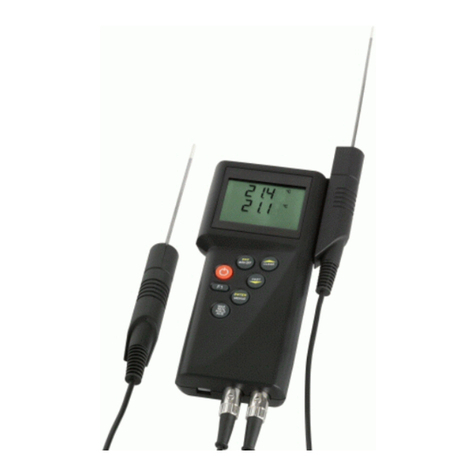
Dostmann Electronic
Dostmann Electronic P700-EX Operation manual
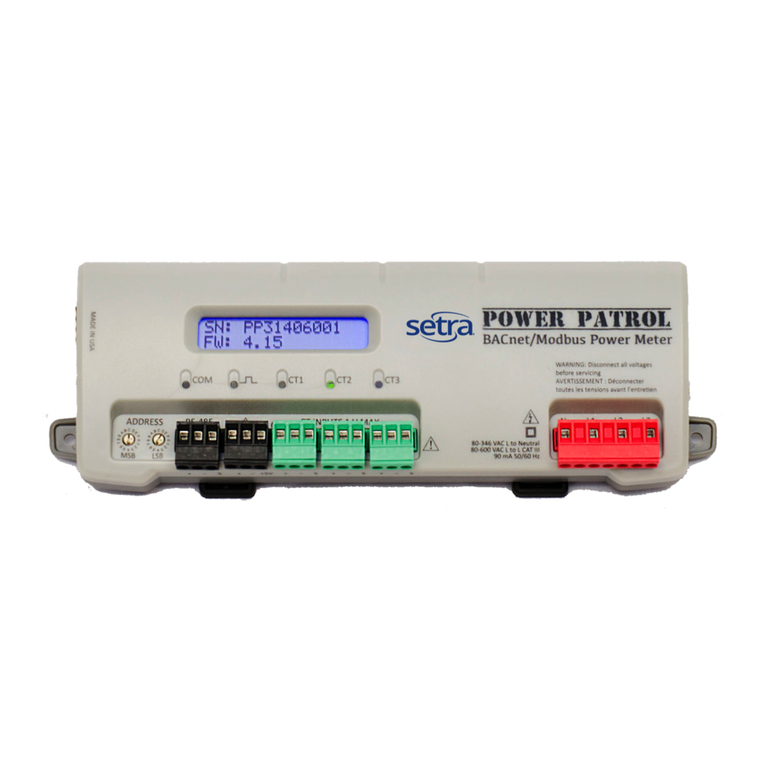
Setra Systems
Setra Systems Power Patrol Operator's guide
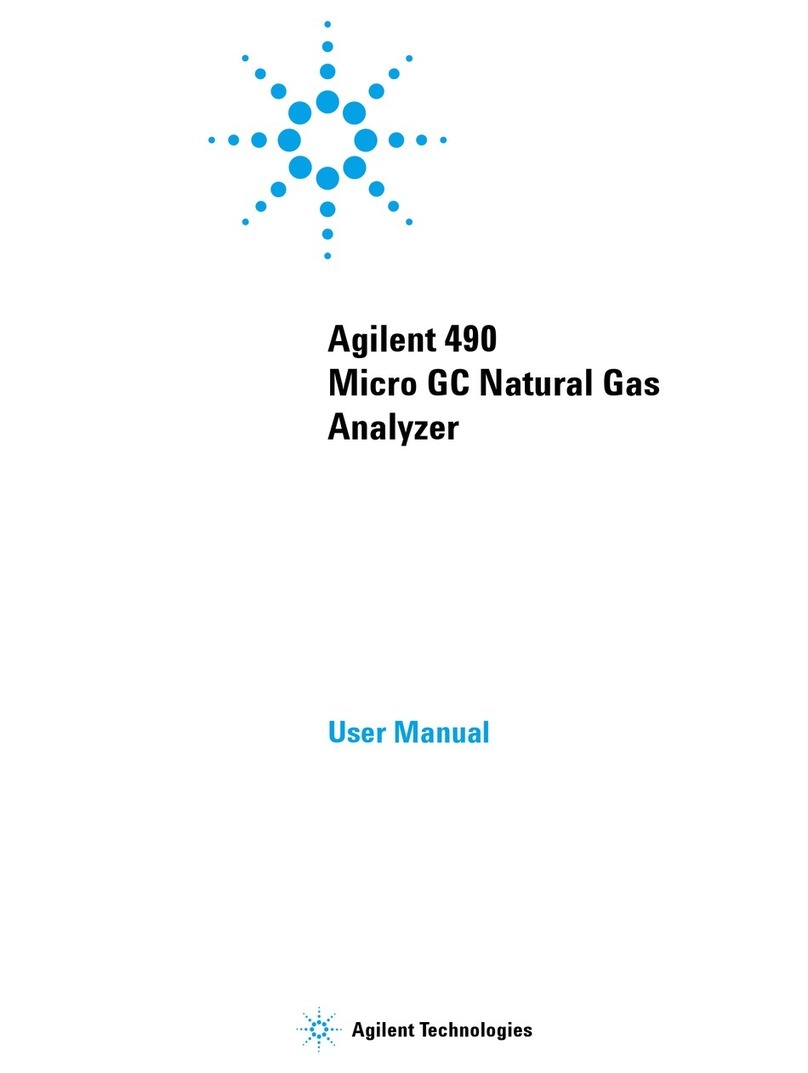
Agilent Technologies
Agilent Technologies 490 Micro GC user manual
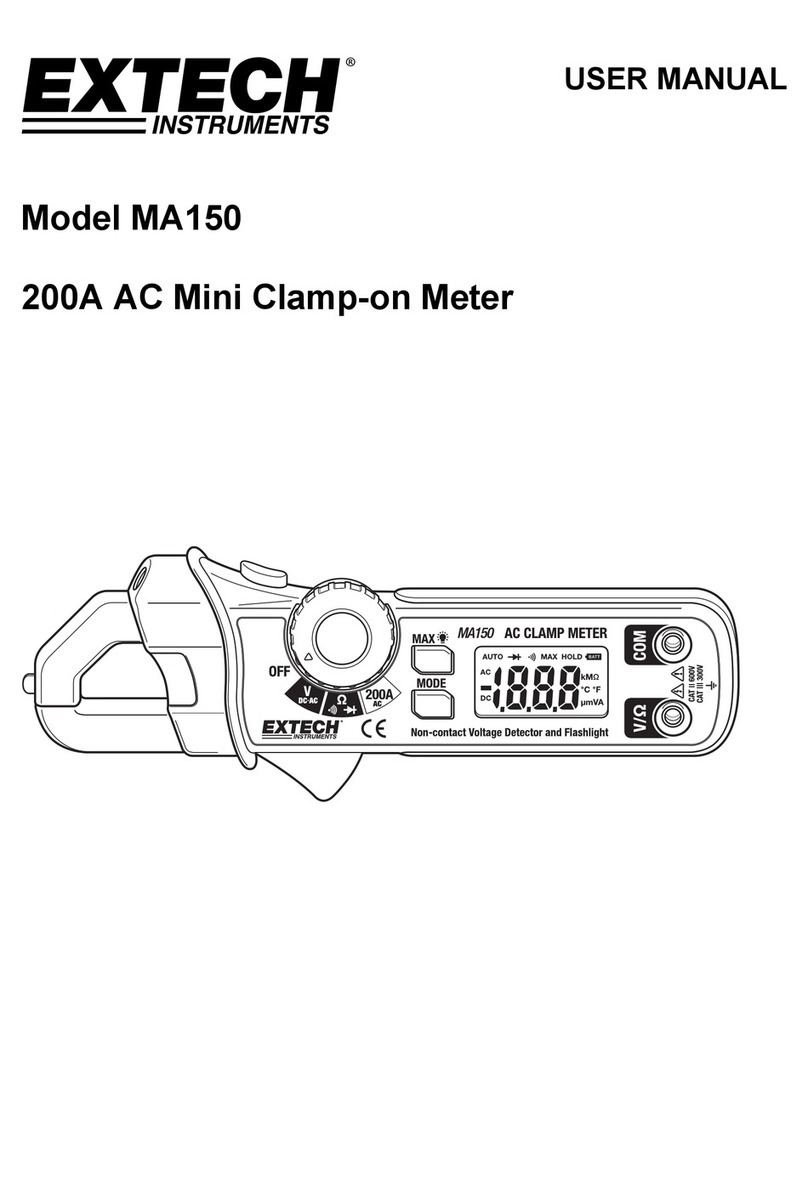
Extech Instruments
Extech Instruments MA150 user manual
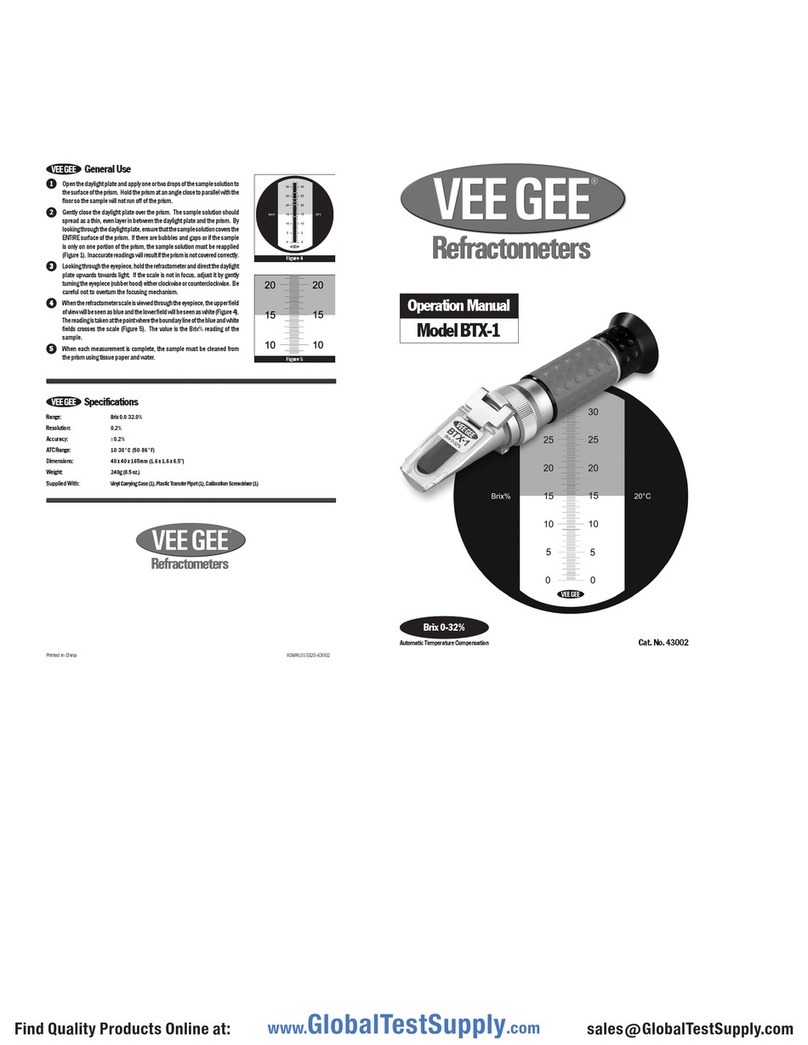
VEE GEE
VEE GEE BTX-1 Operation manual
